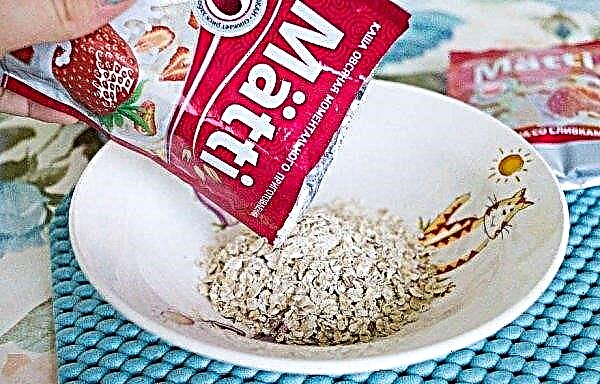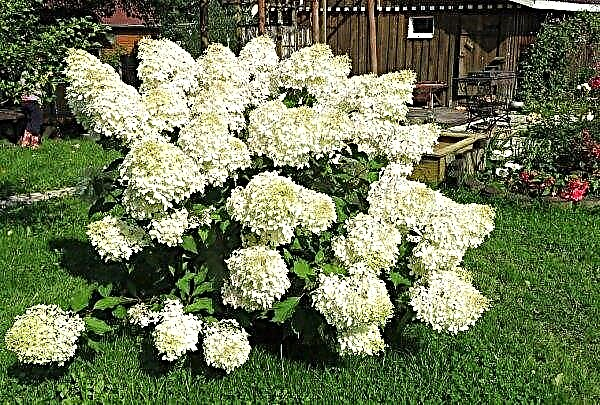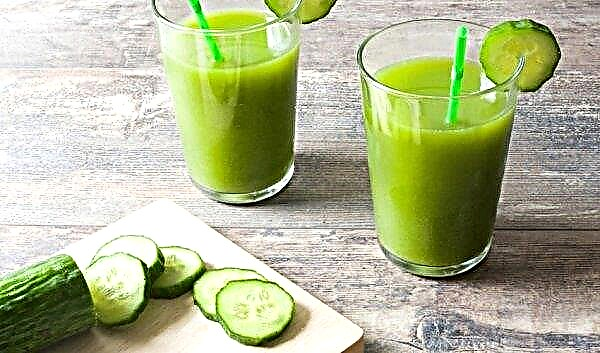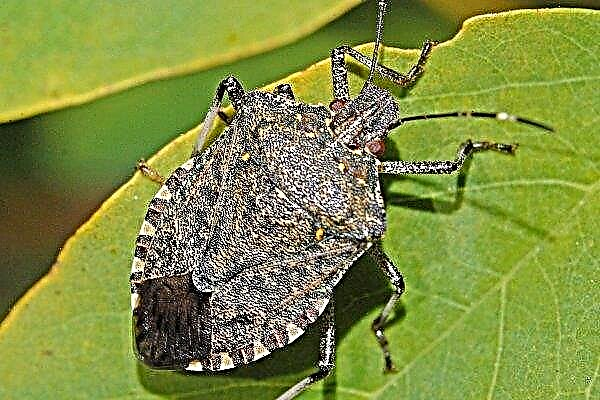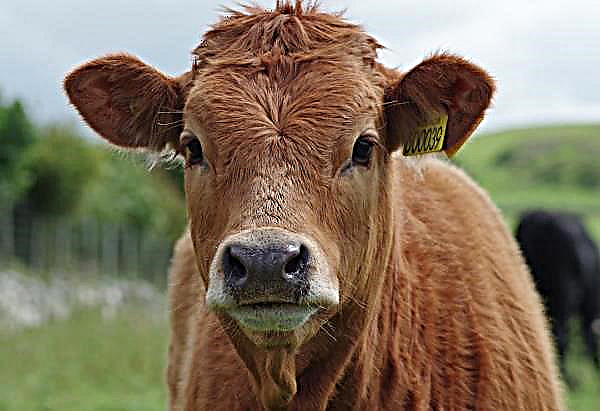Fatima tomatoes attract both professional vegetable growers and beginners. The variety gained popularity due to its positive characteristics. About how to grow tomatoes of this variety, and how to care for them, read on.
Grade description
The Fatima tomato variety is the fruit of the work of Russian breeders.
Its varietal characteristics:
- early ripening, within 85–90 days;
- suitable for growing in open areas;
- bushes grow to 0.6 m, the plant is determinant;
- the variety is resistant to diseases, in particular, late blight;
- from one bush usually remove up to 5 kg of the crop.
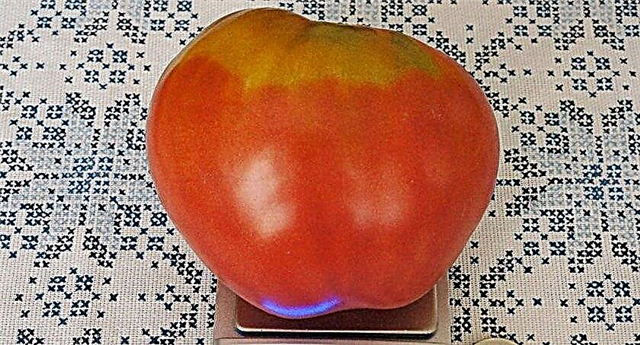
The agronomists say the following about the fruits of tomato Fatima:
- ripe tomato weighs 300-400 g;
- the fruits are large, the shape is heart-shaped;
- color red-pink;
- fleshy flesh;
- there are few seed chambers in the section;
- taste closer to sweet;
- universal application.
Advantages and disadvantages
- Of the characteristics of the variety, the advantages are called:
- fruit size;
- large crop;
- resistance to diseases;
- the ability to grow crops in all regions;
- unpretentiousness in leaving;
- keeping quality.
- Fatima has only two drawbacks:
- under the weight of the fruit, the branches break off, so they need to be tied up;
- there are few seeds in the fruits.
Features of self-growing seedlings
Fatima cultivars are grown in seedlings. Sowing seeds and growing seedlings should be done using the correct technology. Otherwise, the gardener will not receive a healthy and plentiful crop.
Optimum timing for sowing
Experienced gardeners advise sowing tomato seeds of the Fatima variety from March 1 to 15.
Did you know? The Aztecs used tomatoes not only as food, but also as a medical tool. Tomato juice was used to treat a runny nose, an eyesore and other diseases.
The soil
For independent soil preparation, 2 parts of garden soil, 1 part of humus and 1 part of sand are mixed. As a nutritional supplement, ash can be used.
The soil before sowing is disinfected. The most affordable way is to steam the substrate with boiling water. You can also calcine the mixture in the oven. After such processing, no harmful microorganisms will remain in it.
Capacity for growing
Wide boxes (wooden or plastic) are suitable for sowing. The grown seedlings from the total capacity then dive into separate ones.

Seed preparation
Before sowing, the seeds are disinfected. For disinfection, seed must be placed in a 1% potassium permanganate solution for 30 minutes.
If the seeds were obtained from a previous crop or purchased from another gardener, soak them in water at a temperature of + 40 ° C for 2-3 hours. Purchased seeds are not processed this way.
Additionally, seed can be soaked in a growth promoter. But this step is optional. If you still decide to contribute to growth in a similar way, follow the instructions for the selected drug.
Did you know? The first European countries to learn about tomatoes were Portugal and Spain. Mariners brought them there from South America in the 16th century.
Sowing seeds
Seeds are deepened into the soil by 1.5 cm. Between grains, a distance of 1.5–2.5 cm is observed. In one container, it is better to sow material in only one furrow.
Seedling Care
After sowing the seeds, moisten the soil from the atomizer, then close the container with a glass plate or film. Crops are placed in a dark place. Air temperature should be at + 25 ° С. From time to time spray the substrate.
When shoots appear, remove the shelter. Now the box with seedlings can be transferred to the light. A great place will be the windowsill. The temperature can be lowered to + 22 ° C. Moisturize the soil daily, preventing it from drying out, but care must be taken to ensure that the soil mixture is not flooded with water.
When there are 3 leaves on the sprouts, they are dived into individual glasses. After 10 days, a complex fertilizer is applied to the soil. After that, tomatoes are fed 1 time in 14 days before transplanting to a permanent place and periodically moisten the soil. 2 weeks before transplanting to the seedling garden, hardening is necessary. So the seedlings will quickly adapt to new conditions. For hardening, glasses with tomatoes are taken outside. Start with a one-hour stay in the open air, then increase the period every day by 1-1.5 hours. By the end of hardening, the seedlings should be on the street for at least 10 hours.
2 weeks before transplanting to the seedling garden, hardening is necessary. So the seedlings will quickly adapt to new conditions. For hardening, glasses with tomatoes are taken outside. Start with a one-hour stay in the open air, then increase the period every day by 1-1.5 hours. By the end of hardening, the seedlings should be on the street for at least 10 hours.
2 days before planting, seedlings are treated with Epin. After this treatment, the growth of seedlings will accelerate.
Planting seedlings in a permanent place
60-day-old seedlings can be transplanted to a permanent place. Seedlings can be moved to the greenhouse at the beginning of May. To change to the garden, wait for the end of the month.
Step-by-step landing technology:Important! It is recommended to plant tomato seedlings at an angle of 90 °.
- Fertilize the soil with compost or potassium-phosphorus fertilizing.
- Loosen the area to a depth of 4-7 cm.
- Dig holes 13–18 cm deep. Keep a distance of 50 cm between the beds and 40 cm between the beds.
- Moisten the substrate in containers with seedlings.
- Get the seedlings and place them in the pits.
- Fill the wells with soil.
- Water the beds.
Outdoor Care
After transplanting to a permanent place behind the bushes, you need to continue care. The development of tomatoes depends on competent watering, timely top dressing, tying and soil care.
Watering
Water the beds regularly so that the earth does not have time to dry out much. Avoid excessive moisture. In the heat, moisten the soil every 3 days. If the weather is cool and rainy, moderate watering up to 1 time per week.
Tomatoes moisturize by irrigation. Water is poured directly under the bush - sprinkling is unacceptable.
Top dressing
10 days after transplanting the seedlings to a permanent place, add mineral top dressing. Before flowering, use nitrogen products. When the bushes bloom, give up nitrogen fertilizing. Throughout the growing season, feed the bushes every 2 weeks.
Soil care
After planting, do not forget about soil care. After each irrigation or precipitation, be sure to loosen the soil. Otherwise, it will take on a crust and will not allow oxygen to pass through. Along with this, regularly remove weeds.
To preserve moisture, the beds can be mulched. As a mulch, experienced farmers are advised to use leaves or straw.
After 1.5 weeks after planting, carry out the hilling. After another 3 weeks, repeat the procedure. Hilling promotes root growth and enriches them with oxygen.

Shaping and tying a bush
Bushes of tomatoes of this variety do not require the formation and pinching.
In order for the stems to bear the weight of the fruit, they should be tied. To do this, drive stakes 1-1.5 m high near each bush. Tie the shoots as they grow.
Important! Tie the stems with synthetic fabric. In natural materials, it is very likely that a fungus will start.
Harvesting and storage
With proper care, the first tomatoes are already sung by the end of July. In the first half of August, mass ripening begins.
Ripe fruits lie for a long time and do not crack. Experienced gardeners advise storing the crop in separate containers at room temperature. Contrary to popular belief, it is better not to keep tomatoes in the refrigerator.
Even a novice with no experience can cope with the care of the tomato variety Fatima. The bushes are easy to care for, and the yield is amazing. The basic rule is to adhere to all recommendations for growing crops. Only in this case, the gardener will receive a rich harvest.







